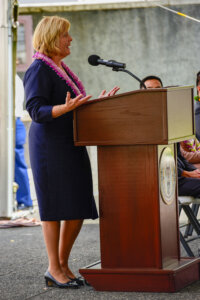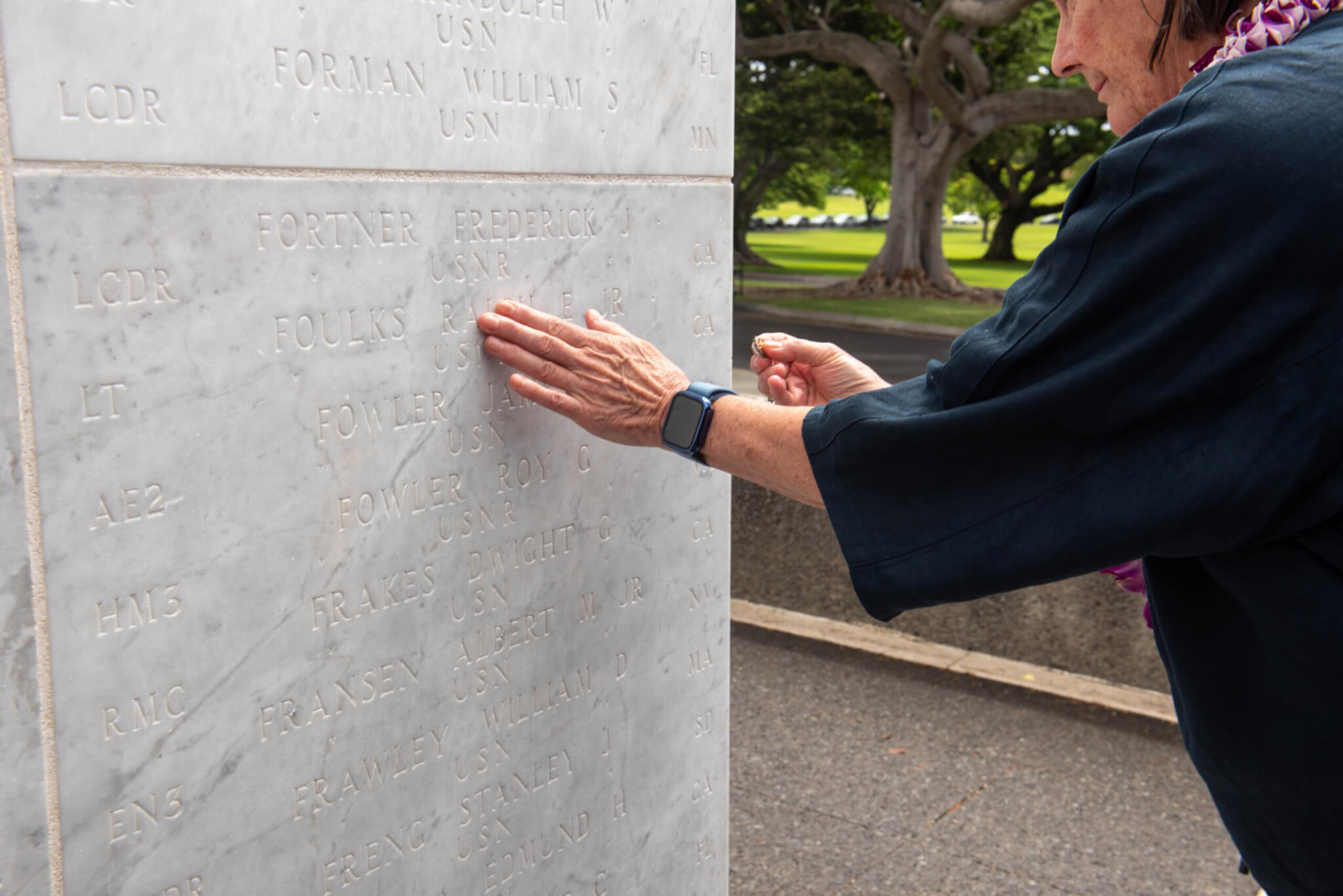Gold Star families honored loved ones in the largest event of its kind on POW/MIA Recognition Day.
Thirty families joined nonprofit groups, military service academies, federal agencies, and the American Battle Monuments Commission (ABMC) in September at the Honolulu Memorial, located within the National Memorial Cemetery of the Pacific. The event honored more than 950 service members who went missing during the Vietnam War and have been accounted for by the Defense POW/MIA Accounting Agency (DPAA).
Families placed bronze rosettes beside the names of their loved ones engraved on the Courts of the Missing. The rosettes symbolized the recovery and identification of these service members, a process that took years of effort and dedication by the DPAA.
A poignant example of such recovery efforts was the story of Air Force Capt. Stephen A. Rusch, who went missing in action on March 7, 1972, while serving as a weapons systems officer in an F-4E Phantom II aircraft during a mission over southern Laos. His daughter, retired Maj. Gen. Sharon Bannister, reflected on the impact of her father’s disappearance and the eventual recovery of his remains, sharing how the DPAA became part of her family’s journey.
“The DPAA profoundly changes lives,” she said.

Long road to recovery
The recovery of Rusch’s remains exemplifies DPAA’s commitment to bringing home America’s missing heroes. In the early 2000s, DPAA, then known as the Joint POW/MIA Accounting Command, conducted two excavations at the crash site in Laos, uncovering human remains, U.S. coins, and life support equipment — evidence that led to Rusch’s identification through DNA testing in 2007.
Bannister recalled the moment she first held her father’s remains.
“I held the teeth in my hand, and I closed my palm, and I felt like I was hugging my dad. I knew he was home, and the tears finally fell. Not the tears of frustration, I was finally able to have the answers I needed to start grieving and that meant the world to me.”
Her journey, from the day her father went missing to the moment she was able to lay his remains to rest at Arlington National Cemetery, underscored the emotional weight carried by families of the missing. Bannister spoke of the countless unknowns that plagued her thoughts for decades, the unanswered questions that haunted her dreams.
“It’s hard to explain when you have to make up your own story,” she said. “There is no end to the story because you really don’t know what happened.”
Honoring the fallen and their families
For families of American service members lost in the Vietnam War, the journey is long and emotionally challenging. However, the recovery of their loved ones provided a form of healing and closure that words cannot express. The bronze rosettes placed during the ceremony served as a powerful reminder of the nation’s promise to “never forget” those who served and sacrificed. Bannister reflected on the gravity of the loss symbolized by the Gold Star pin, sharing how its weight is both physical and emotional.
“But when I see it on someone, I know I can go up to them and they’ll understand.”
The ABMC, which oversees the Honolulu Memorial and 55 other cemeteries and memorials worldwide, plays a crucial role in preserving these memories. These memorials stand as lasting tributes, providing spaces for reflection, remembrance, and recognition of those who gave so much. Through their work, the ABMC ensures the sacrifices of America’s service members are honored, keeping the stories of the fallen alive for future generations.

Ongoing mission to account for the missing
While the recovery of lost service members has brought healing and closure to many, for others, the search for answers continues. Denise Madison, daughter of Air Force Chief Master Sgt. William Louis Madison, is among those still grappling with the uncertainty of her father’s fate.
Madison was 7 when her father’s AC-47D gunship was shot down over Laos in 1966. Decades later, she vividly remembers the heartbreak of realizing her father wasn’t among the POWs returning home. Although a gravesite containing the remains of one crew member was found in 1994, and it was assumed all perished together, Madison still struggles with the lack of personal closure.
“To me, his remains have yet to be found,” she said.
Sons and Daughters in Touch, an all-volunteer organization that unites Gold Star children of Vietnam War service members, invited Madison to participate in the two-day event. Despite attending these events and commemorating her father on Memorial Day with family over the years, Madison acknowledges that the pain of not having her father’s remains lingers.
“The work that [the DPAA is] doing is just marvelous. And I love that people have gotten their family members back. But for me, it’s still a question mark. I’m hurt … I’m angry, still.”
For Madison, and others like her, the nation’s dedication to observing POW/MIA Recognition Day is deeply meaningful. It not only honors those who were lost but also recognizes the enduring pain of their families. Madison reflected on how significant this day is, especially for children like her who grew up without their fathers. She spoke of how she often had to piece together her father’s memory from her mother’s stories, creating her own images of him in her mind.
A powerful reminder
The ceremony at the National Memorial Cemetery of the Pacific provided unity and healing for the families of those who sacrificed. It also highlighted DPAA’s enduring commitment to recover the over 81,000 missing personnel from past wars, a mission that continues until every family has the answers they seek.
“Participating in ceremonies like this reinvigorates those involved in the mission,” said DPAA spokesperson Sean Everette.
Bannister’s words resonated deeply, emphasizing the nation’s collective responsibility: “Today, first and foremost, we have to think about our families whose loved ones are not home. The professionals at DPAA will work tirelessly until they come home. Let them never be forgotten.”
Read comments

























